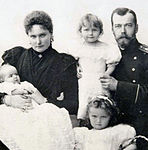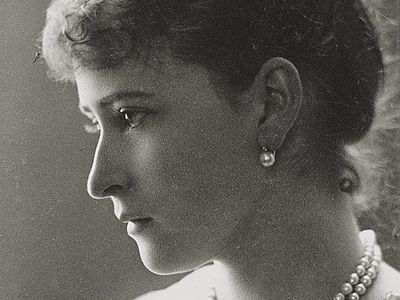Moscow, February 3, 2017
A new exhibition dedicated to the history of the Russian branch of the Red Cross and the role of the royal family, especially that of the Grand Duchess St. Elizabeth the New Martyr, opened Wednesday, February 1 in the Viennese offices of the United Nations.
The exhibition, “Charity in History: Contribution of Grand Duchess Elizaveta Fedorovna to the Activities of the Russian Red Cross Society,” presents historical material about St. Elizabeth and the work of the Red Cross Society in Russia, including photos and other archive materials gathered by The Grand Duchess Elizabeth and Grand Duke Sergius Enlightenment Society and International Committee of the Red Cross highlighting the first years of the foundation, reports news.com.au.
“The long history of charity and philanthropy in Russia is based on the Christian tradition and our national culture, which has always encouraged Russian Tsars, Emperors and nobility to generously contribute to extensive humanitarian activities of numerous medical, social and religious institutions. The Russian Red Cross Society is one of the oldest Red Cross organizations in the world, and its early history is closely linked to the royal family and the nobility of the Russian Empire,” said exhibition curator Anna Gromova, Chairwoman of the Supervisory Board of The Grand Duchess Elizabeth and Grand Duke Sergius Enlightening Society.
The Russian Red Cross Society is one of the world’s oldest arms of the International Committee of the Red Cross which was founded in 1859, growing out of Tsar Alexander II’s “Community for Care for the Sick and Wounded Soldiers” founded in 1867 and given to the care of the tsarina Maria Alexandrovna. Many members of the royal family and nobility would participate in the organization’s work, although, as the exhibition highlights, the contribution of Grand Duchess Elizabeth is especially noteworthy.
Grand Duchess Elizabeth, the German princess who married the tsar’s brother and adopted Orthodoxy, was quickly accepted by the Russian people who saw her deep commitment to the faith and therefore to charity. As Russia Today writes, she headed the Women’s Committee of the Red Cross, first setting up an orphanage in Moscow, followed by others throughout the area. She eventually took charge of the entire Moscow Red Cross organization, coordinating the care of thousands of patients by hundreds of doctors and volunteers.
“From 1901 the Russian Red Cross has integrated in its duties, not only the care of wounded and sick soldiers, but also care for the whole population during natural disasters like floods and epidemics, and so basically it performed the functions of EMERCOM1,” Gromova said, highlighting the broad range of responsibilities undertaken by the grand duchess.
St. Elizabeth moved to a convent in 1905 following the death of her husband, dedicating herself evermore to the care of orphans, the sick, and poor. In 1908 she founded the famous Martha and Mary Convent of Mercy which offered assistance to sick and wounded soldiers, the poor, and orphans.
St. Elizabeth was martyred in 1918 for her selfless faith and royal blood and canonized in 1992. The Grand Duchess Elizabeth and Grand Duke Sergius Enlightening Society was established in 2011 to preserve her memory and continue her traditions.
The exhibition of hundreds of rare photos and little-known facts was first presented at the UN offices in Geneva, and Gromova says she hopes to take it to other European capitals after Vienna as well.





